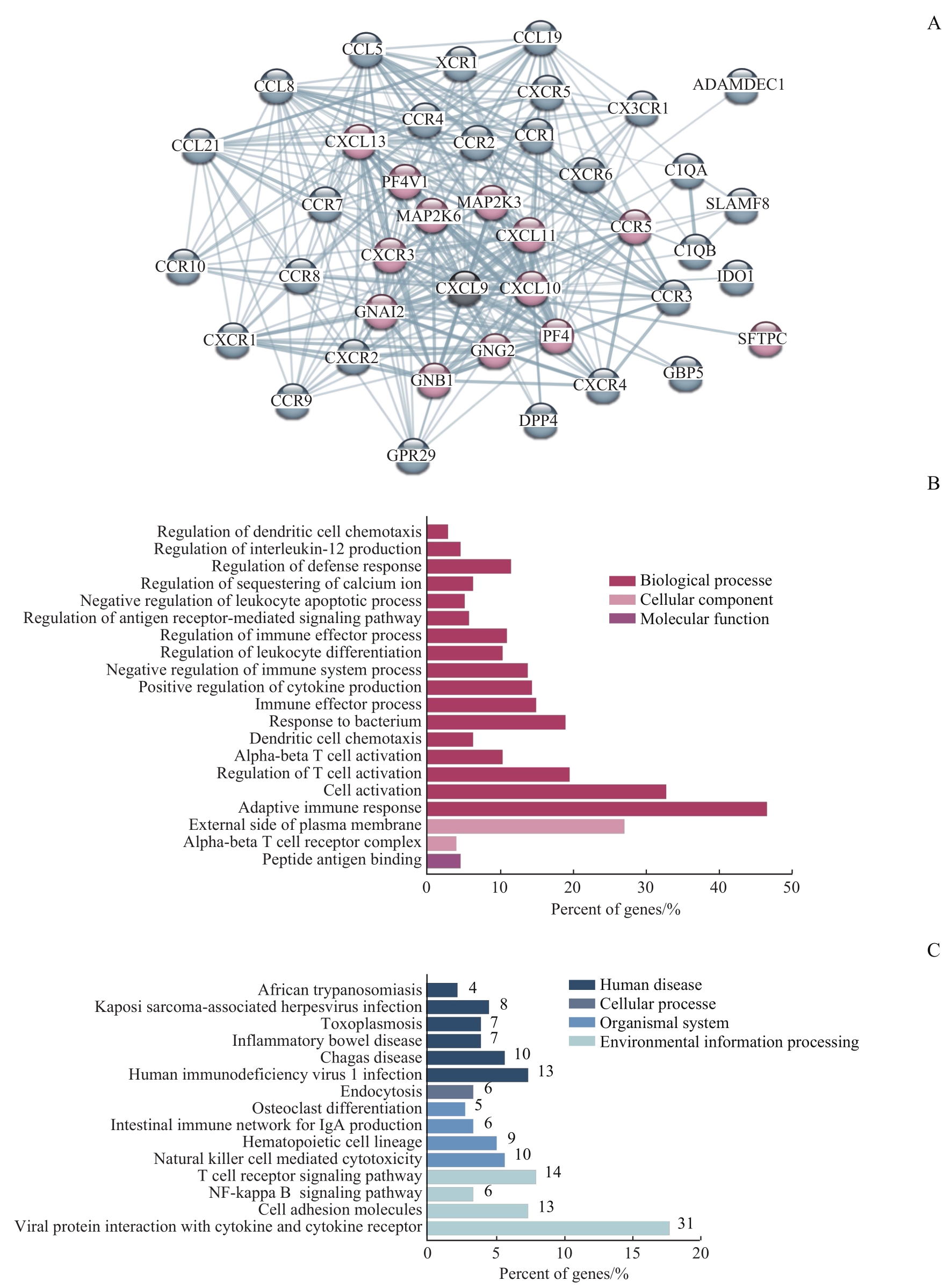CXCL9在乳腺癌中的表达及其与肿瘤免疫浸润特征的相关性研究
CXCL9 expression in breast cancer and its correlation with the characteristics of tumor immunoinfiltration
Note: A. PPI network of CXCL9. Red indicates proteins with CXCL9 interaction score >0.9, and blue indicates proteins with CXCL9 interaction score >0.7. PF4—platelet factor 4; PF4V1—platelet factor 4 variant 1; MAP2K3/6—dual specificity mitogen-activated protein kinase kinase 3/6; GNAI2—guanine nucleotide-binding protein G(i) subunit alpha-2; GNG2—guanine nucleotide-binding protein G(I)/G(S)/G(O) subunit gamma-2; GNB1—guanine nucleotide-binding protein G(I)/G(S)/G(T) subunit beta-1; SFTPC—surfactant protein C; CCR1—C-C chemokine receptor type 1; CXCR1—C-X-C chemokine receptor type 1; CX3CR1—CX3C chemokine receptor 1; CCL5—C-C motif chemokine ligand 5; DPP4—dipeptidyl peptidase-4; GPR29—chemokine (C-C motif) receptor 6; XCR1—chemokine XC receptor 1; C1QA/B—complement component 1, Q subcomponent, A chain/B chain; IDO1—indoleamine 2,3-dioxygenase 1; SLAMF8—SLAM family member 8; ADAMDEC1—adam-like, decysin 1; GBP5—guanylate-binding protein 5. B/C. GO function analysis (B) and KEGG pathway analysis (C) of CXCL9 and its related genes.
